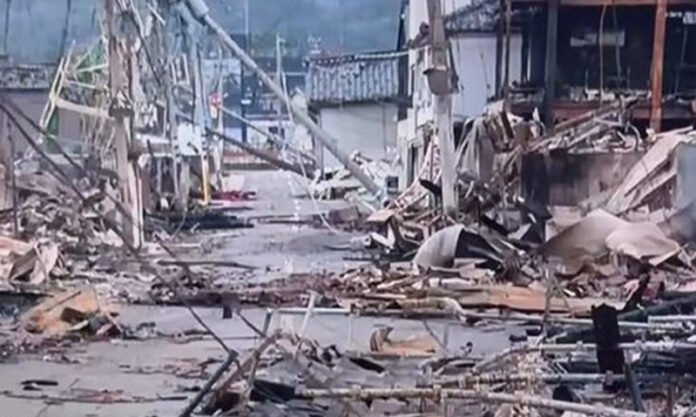Tokyo, November 10:
A powerful 6.7 magnitude earthquake struck off Japan’s Pacific coast late Monday, prompting authorities to issue a tsunami advisory for the Iwate prefecture and temporarily suspend high-speed rail operations.
The tremor, recorded at a depth of around 60 kilometers, rattled coastal regions across northeastern Japan, causing power outages, communication disruptions, and temporary suspension of Shinkansen (bullet train) services as a precautionary measure.
Authorities Issue Tsunami Advisory
Japan’s Meteorological Agency (JMA) urged residents in low-lying coastal areas to move to higher ground, warning that small tsunami waves could reach Iwate’s shores. Early observations suggested no immediate signs of major structural damage, but authorities remain on high alert for aftershocks.
“We are closely monitoring coastal activity. Residents should remain cautious even after the advisory is lifted,” said a JMA spokesperson in a televised statement.
Transport and Power Impact
In response to the quake, East Japan Railway Company halted Shinkansen services between Morioka and Sendai as a safety measure. Local utilities confirmed temporary power cuts in parts of the Tohoku region, though restoration work was underway within hours.
Air traffic across northern Honshu remained unaffected, but local schools and public offices are expected to remain closed until inspections are completed.
Japan’s Earthquake Preparedness
Japan, situated along the seismically active Pacific “Ring of Fire,” frequently experiences powerful earthquakes. Authorities credited the country’s advanced early warning systems for helping minimize damage and preventing panic.
Conclusion
As rescue and safety teams assess the situation, early reports suggest Japan’s infrastructure has once again demonstrated remarkable resilience. The quick response and safety measures taken by local authorities helped avert larger damage — a reminder of Japan’s enduring preparedness against nature’s unpredictability.
















